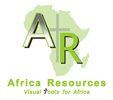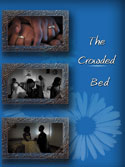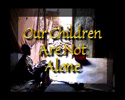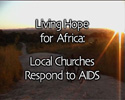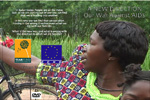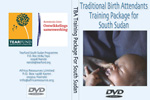|
Africa Resource Videos1. Symbols in Conflict: a process using symbols to analyze the sources and potential resolution of conflict is shown as it is used in an actual church conflict. This process can be modified to help facilitate discussion of conflict issues in many different situations and groups. NTSC 2. Beyond the Disaster: The story of the counseling coalition that formed among Christian organizations and churches to help deal with the trauma caused by the bombing of the United States Embassy in Nairobi Kenya in August, 1998. The process and structure of the coalition is outlined and some of the lessons learned are shared. Originally produced for a PhD research project analyzing effective community interventions following violent conflict (Wholeness and Healing). NTSC 3. Saint James Massacre: The story of the St. James Church of England of South Africa in Capetown in 1995 when the Azalian People's Liberation Army entered the church during a worship service and lobbed hand grenades and fired automatic rifles at the worshippers, killing and wounding many. This case was one heard by the Truth and Reconciliation Commission and is the gripping story of how victims, perpetrators, and a pastor responded to the feelings and issues of forgiveness on the pathway to reconciliation. Originally produced for a PhD research project analyzing effective community interventions following violent conflict (Wholeness and Healing). NTSC 4. Khulamani, Speak Out: The story of the formation and activities of support groups that were formed before and during the Truth and Reconciliation Commission to assist the families who had lost members or who had been traumatized by the actions of the apartheid regime. This simple but powerful intervention of help and hope is one that every church could emulate. Originally produced for a PhD research project analyzing effective community interventions following violent conflict (Wholeness and Healing). NTSC 5. Video Dialog: The story of conflict between two ethnic communities in a single black community outside Johannesburg, South Africa. After years of violent conflict that created many no-go zones and displaced peoples, a church leader assisted in a project to use the leaders of the armed conflict to video-tape the stories and responses of people in their communities. These video-interviews were then screened to the other side, and eventually to a combined audience to help people begin to dialog with each other. Originally produced for a PhD research project analyzing effective community interventions following violent conflict (Wholeness and Healing). NTSC 6. African Revival Ministries, The Living Church: the story of Rwandan evangelist David Ndarahutsi whose father was killed when he was a boy during ethnic conflicts. Ndarahutsi began a series of holistic ministries to make the gospel practical in Rwanda and Burundi before and following the decimation of 1994 in Rwanda. Although Ndarahutsi died in an airplane crash, the ministry of ARM and the Living Church continued on as a testimony of the power of holistic ministry in a multi-ethnic and multi-regional conflict. Originally produced for a PhD research project analyzing effective community interventions following violent conflict (Wholeness and Healing). NTSC 7. African Evangelistic Enterprise, Healing Wounded Hearts: Under the leadership of a multi-ethnic and multi-regional team, AEE successfully led a series of workshops for three years in every prefecture in Rwanda to help church leaders and lay-people experience healing of their war trauma following the 1994 decimation. The significant parts of this workshop are explained and participant's experiences are seen. Lessons learned are shared. Originally produced for a PhD research project analyzing effective community interventions following violent conflict (Wholeness and Healing). NTSC 8. JRMD, Healing hearts and homes: The story of JRMD (Youth in Construction in a World in Destruction) is seen as it works with the assistance of a local congregation in both Nairobi Kenya and in Wisconsin, USA to bring youth together to assist in the reconstruction of many homes in one part of Bujumbura, Burundi. The impact of practical home-building, using volunteer youth in the reconstruction, and networking of local and international churches is seen. Originally produced for a PhD research project analyzing effective community interventions following violent conflict (Wholeness and Healing). NTSC 9. Martin Luther King Jr.: The story of the civil rights movement and Martin Luther King Jr as the catalyst who used black American churches and church leaders to galvanize a nation around non-violent resistance to injustice in such a way that laws were changed and an entire generation impacted by the hope of new relationships. This film is the digital re-mastering of two commercially produced films, "Dr Martin Luther King, Jr, a Historical Perspective" and "Heroes, the legacy of Martin Luther King, Jr." Originally produced for a PhD research project analyzing effective community interventions following violent conflict (Wholeness and Healing). NTSC 10. Responding to structural injustice: the testimonies in interview of several of South Africa's leading churchmen. Byers Naude is a white Dutch Reformed clergyman who stood against Apartheid and became the leading white to help awaken the conscious of the "Christian" nation. Moss Nthla is the General Secretary of The Evangelical Alliance of South Africa. Both these men share lessons learned in the struggle against Apartheid in the midst of issues that are highlighted in parts of the Truth and Reconciliation Commission's hearings. NTSC 11. A Living Hope, The church's response to the AIDS crisis: filmed in Malawi and in Kenya, this training video helps church leaders to ask themselves questions about their response to five key audiences affected by AIDS. The film looks at the needs of patients, orphans, care-givers, youth, and church leaders as it raises the question of "what can your church do?" Each section of questions is followed by a section in which the responses of some churches can be seen so that church leaders who view the film can analyze the successes and ideas which they wish to adapt in their ministry. The film is in Chichewa, English, Kiswahili, French, KinyaRwanda, Portuguese, Malagasi. It was originally produced under ISAR productions. NTSC, PAL 12. Our Children are Not Alone: Filmed in Kenya and Rwanda, this is an awareness film to help churches understand who are orphans and vulnerable children, and what are their needs. At eight minutes run time this is a good film to choose as an introduction to a discussion, or as an awareness message in a worship service. Much of its power comes from the refrain of Scripture texts that punctuate the questions raised. It is a golden award winning film. Translations are: English, Kiswahili, Kinyarwanda, Kirundi, Malagasi. It was originally produced under ISAR productions. NTSC, PAL 13. Home But Not Alone:
The numbers of orphans are increasing all over the world, but particularly
in regions where financial poverty is the greatest. Wealthy countries
can best help as they listen to the "relationally rich"
nations that bear the greatest challenges of orphans. This film
is to help the viewer rethink strategies for orphan assistance,
and engage with the challenge. Home But Not Alone has been produced
in collaboration with the Desmond
Tutu Center for Learning. 14. A New Direction: Filmed in southern Sudan, this film is intended to help the emerging Southern Sudan people to understand that there are new challenges following the peace accord. HIV/AIDS has spread with the movement of people into different areas and the disruption of traditional life. Using the local custom of community palaver around a fire, this film identifies key risk factors for HIV/AIDS in southern Sudan. It is produced for the Sudan Christian Aids Network of South Sudan. PAL 15. Traditional Birth Attendants: Filmed in Southern Sudan, this film is a companion for the traditional birth attendant training program that Tearfund has produced for Southern Sudan. The film and manual are used to teach Traditional Birth Attendants the best practices to help women safely deliver in remote locations as well as good post-natal care. PAL 16. The Nehemiah Series has been produced in collaboration with the Desmond Tutu Center for Learning. PAL 17. The Crowded Bed is a 30-minute drama developed to complement the Choose Life curricula targeting youth ages 10-24 with HIV prevention messages. The Crowded Bed is the story of Samson and Martha, a young couple, who come face to face with their past during their honeymoon. Directed by Ian Mbugua of Phoenix Players, the film explores the challenges and influences that youth face and how these can put them at risk of HIV infection. The captivating drama presents a myriad of lessons that help young people to remember that the choices they make will have consequences – whether positive or negative – in the future. The film is based on a learning game, The Crowded Bed, from the curriculum It Takes Courage, and its use was graciously permitted by its publishers, Kerus Global. |
|
|
